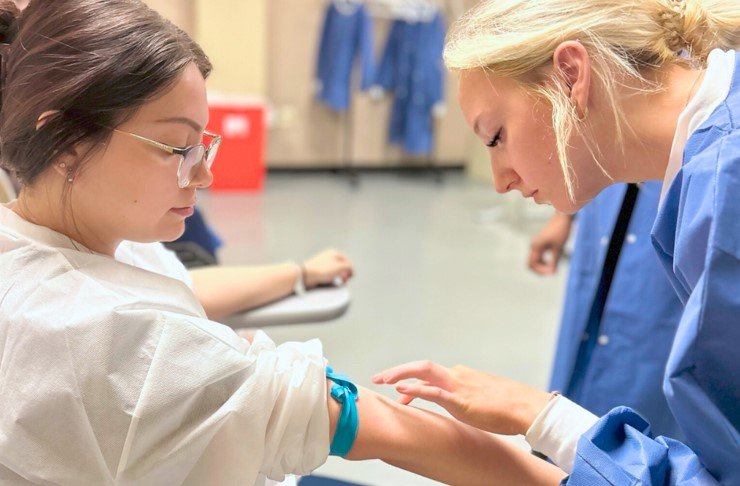Ensuring Timely Procurement of Critical Medical Equipment: Strategies for Hospitals in the United States
Summary
- Hospitals must establish strong relationships with suppliers to ensure timely procurement of critical medical equipment during Supply Chain disruptions.
- The use of inventory management systems and data analytics can help hospitals anticipate and prevent Supply Chain disruptions.
- Collaboration and communication among hospital staff, suppliers, and government agencies are key to maintaining an efficient Supply Chain in times of disruption.
Introduction
Efficient procurement of critical medical equipment is essential for hospitals to provide quality care to patients. However, Supply Chain disruptions can pose challenges to the timely acquisition of necessary supplies. In this blog post, we will explore how hospitals in the United States can ensure efficient and timely procurement of critical medical equipment during Supply Chain disruptions.
Establishing Strong Supplier Relationships
One of the most important ways hospitals can ensure timely procurement of critical medical equipment during Supply Chain disruptions is by establishing strong relationships with their suppliers. Strong supplier relationships can help hospitals navigate disruptions more effectively by:
- Building trust and transparency with suppliers, which can lead to better communication and collaboration in times of crisis.
- Establishing agreements for priority access to critical medical equipment in case of shortages or disruptions.
- Developing contingency plans with suppliers to address potential disruptions before they escalate.
Utilizing Inventory Management Systems
Another crucial strategy for hospitals to ensure efficient procurement of critical medical equipment during Supply Chain disruptions is the use of inventory management systems. These systems can help hospitals:
- Monitor inventory levels in real-time to anticipate shortages and prevent stockouts.
- Track Supply Chain data to identify potential disruptions and take proactive measures to mitigate risks.
- Automate reordering processes to ensure timely procurement of critical medical equipment.
Implementing Data Analytics
Data analytics can also play a significant role in helping hospitals ensure efficient procurement of critical medical equipment during Supply Chain disruptions. By analyzing Supply Chain data, hospitals can:
- Identify patterns and trends that may signal potential disruptions in the Supply Chain.
- Forecast demand for critical medical equipment more accurately to prevent shortages.
- Optimize inventory levels and ordering processes based on data-driven insights.
Enhancing Collaboration and Communication
Collaboration and communication among hospital staff, suppliers, and government agencies are essential for maintaining an efficient Supply Chain during disruptions. Hospitals can improve collaboration and communication by:
- Establishing communication channels with suppliers to provide real-time updates on inventory levels and procurement needs.
- Engaging with government agencies to stay informed about potential regulatory changes or restrictions that may impact the Supply Chain.
- Training staff on effective communication and Collaboration Strategies to ensure a coordinated response during disruptions.
Conclusion
Efficient procurement of critical medical equipment is critical for hospitals to deliver quality care to patients. By establishing strong supplier relationships, utilizing inventory management systems, implementing data analytics, and enhancing collaboration and communication, hospitals in the United States can ensure timely procurement of critical medical equipment during Supply Chain disruptions. By taking proactive measures and leveraging technology and partnerships, hospitals can navigate disruptions more effectively and continue to meet the healthcare needs of their patients.

Disclaimer: The content provided on this blog is for informational purposes only, reflecting the personal opinions and insights of the author(s) on the topics. The information provided should not be used for diagnosing or treating a health problem or disease, and those seeking personal medical advice should consult with a licensed physician. Always seek the advice of your doctor or other qualified health provider regarding a medical condition. Never disregard professional medical advice or delay in seeking it because of something you have read on this website. If you think you may have a medical emergency, call 911 or go to the nearest emergency room immediately. No physician-patient relationship is created by this web site or its use. No contributors to this web site make any representations, express or implied, with respect to the information provided herein or to its use. While we strive to share accurate and up-to-date information, we cannot guarantee the completeness, reliability, or accuracy of the content. The blog may also include links to external websites and resources for the convenience of our readers. Please note that linking to other sites does not imply endorsement of their content, practices, or services by us. Readers should use their discretion and judgment while exploring any external links and resources mentioned on this blog.

